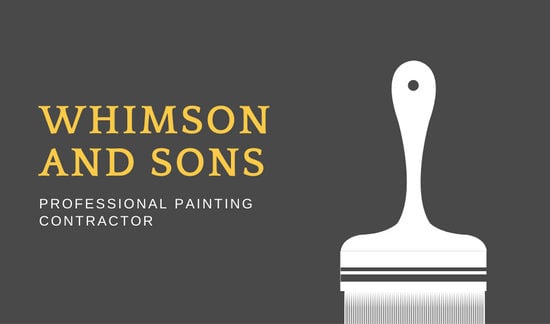Comprehending Seasonal Influences On Commercial Outside Painting: Essential Understanding For Success
Comprehending Seasonal Influences On Commercial Outside Painting: Essential Understanding For Success
Blog Article
Published By-McLamb Chaney
When you're planning a business outside painting project, seasonal variables can make or damage your results. You'll wish to consider how temperature level and moisture influence paint application and drying out times. Choosing the appropriate period can guarantee your paint adheres properly and lasts longer. But which periods are really the best for this kind of job? Let's discover the key elements that can influence your project's success.
The Impact of Temperature on Paint Application
When you're planning a commercial outside paint task, the temperature can considerably affect just how well the paint sticks and dries out.
Preferably, you wish to repaint when temperature levels vary between 50 ° F and 85 ° F. If it's as well cool, the paint may not heal appropriately, resulting in concerns like peeling or fracturing.
On the flip side, if it's as well warm, the paint can dry out also promptly, preventing correct bond and leading to an uneven finish.
You need to also think about the moment of day; morning or late afternoon offers cooler temperature levels, which can be a lot more beneficial.
Constantly inspect the manufacturer's suggestions for the details paint you're making use of, as they usually provide advice on the ideal temperature level range for optimum results.
Moisture and Its Effect on Drying Times
Temperature isn't the only environmental variable that influences your business external paint project; humidity plays a substantial role too. High humidity degrees can decrease drying times drastically, affecting the general top quality of your paint task.
When the air is filled with moisture, the paint takes longer to heal, which can lead to problems like inadequate bond and a higher danger of mold growth. If you're repainting on a particularly damp day, be prepared for prolonged wait times in between layers.
It's crucial to keep an eye on local climate condition and plan accordingly. Preferably, go for humidity degrees between 40% and 70% for ideal drying.
Maintaining these consider mind ensures your project remains on track and delivers an enduring coating.
Best Seasons for Commercial Exterior Painting Projects
What's the best time of year for your business outside paint projects?
Springtime and very early fall are commonly your best bets. During these periods, temperature levels are moderate, and humidity degrees are commonly lower, producing optimal conditions for paint application and drying.
Avoid summer's intense heat, which can cause paint to completely dry too promptly, leading to inadequate attachment and surface. Similarly, winter season's chilly temperatures can impede correct drying and treating, risking the longevity of your paint task.
Aim for days with temperatures in between 50 ° F and 85 ° F for optimal outcomes. Bear in mind to examine the neighborhood weather report for rain, as damp conditions can wreck your project.
https://interior-painter-near-me56655.blogofchange.com/36190331/gain-access-to-expert-knowledge-from-home-owners-on-achieving-successful-teamwork-with-paint-service-providers around these elements guarantees your paint project runs smoothly and lasts much longer.
Conclusion
In conclusion, preparing your commercial external painting jobs around seasonal considerations can make a significant difference in the end result. By professional painting services during the suitable temperatures and moisture levels, you'll make certain much better attachment and drying times. Remember to watch on https://www.dailymail.co.uk/femail/article-11972507/I-added-230-000-homes-value.html and select the correct time of year-- springtime and early loss are your best choices. Taking these actions will aid you achieve a resilient and expert coating that lasts.
